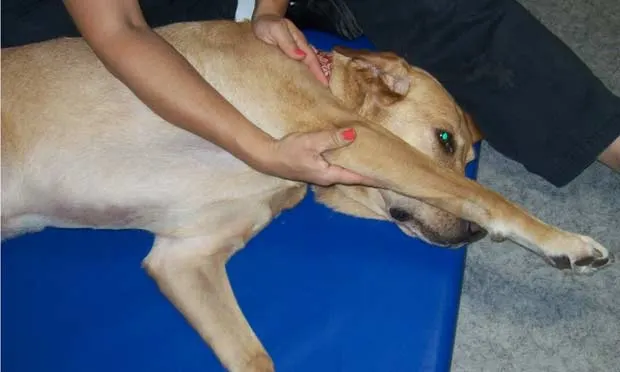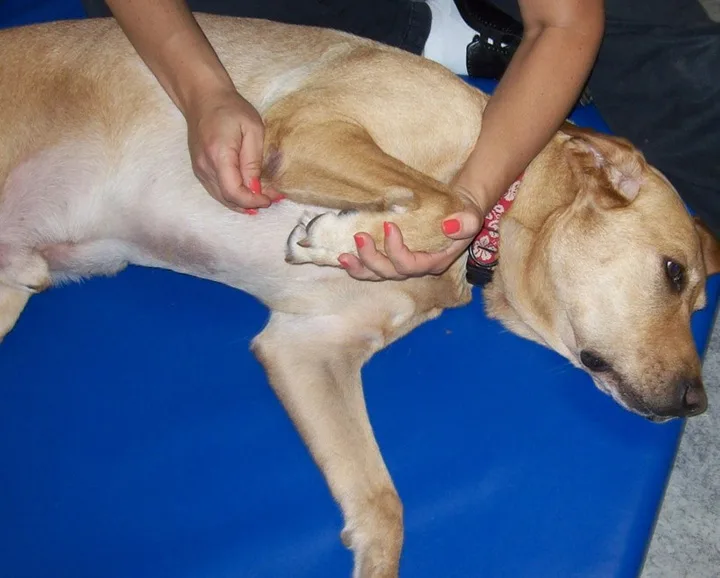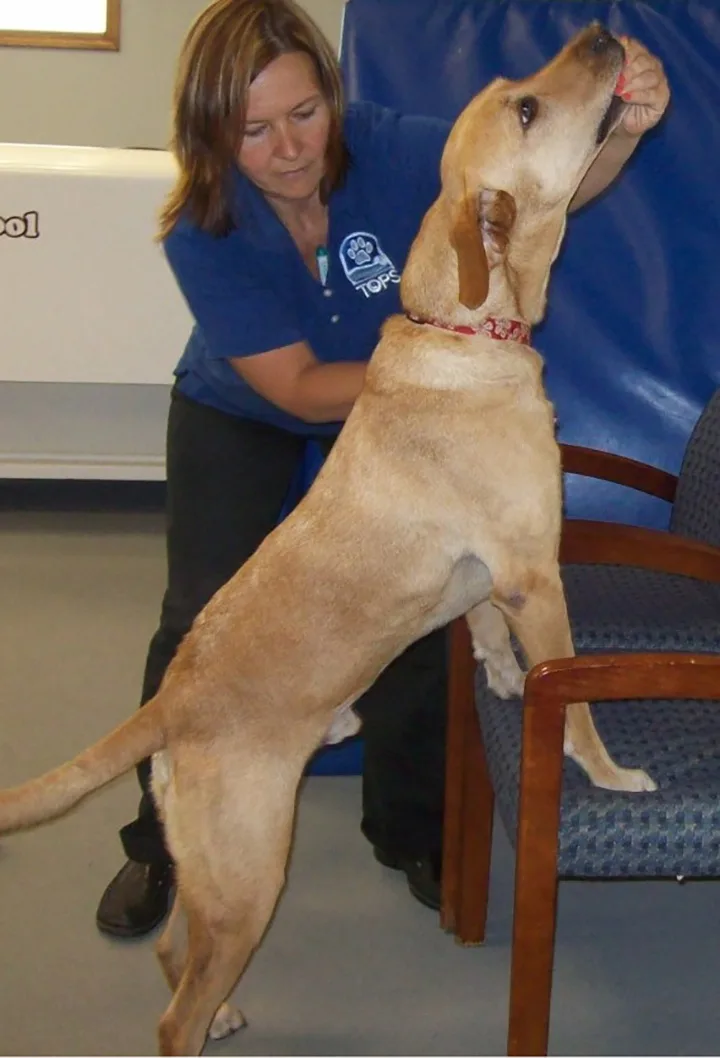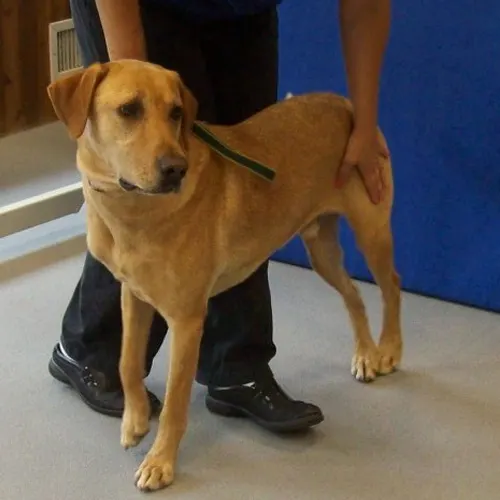Physical Rehabilitation & Senior Pets

Senior pets are not unlike senior citizens. They need frequent checkups, typically receive multiple medications, and have “senior moments.” Like people, pets tend to lose muscle and balance with age. This age-related muscle and proprioceptive loss can lead to inactivity and weight gain, increased stress on joints from diminished stability of surrounding musculature, and injuries from tripping and falling.
Senior pets can benefit from massage to relieve aches, shorter and more frequent walks for cardiovascular health, and strengthening, stretching, and balance/proprioception exercises to encourage strength and stability.
Related Article: Forelimb Lameness in the Active Dog
Three types of exercises may benefit older pets:
Passive range-of-motion (PROM) exercises
General exercises for maintaining balance and proprioception
Targeted exercises aimed at strengthening gluteal and hamstring muscles (the muscles needed to maintain standing)
While the exercises described here are useful for most senior pets, they are not unique and can be used for injured as well as athletic dogs. Many other exercises are also appropriate for seniors. While physical rehabilitation techniques are generally used for dogs, cats can benefit from these exercises as well.
Passive Range-Of-Motion Exercises
PROM exercises are used to improve range of motion when exercise is restricted as well as to maintain range of motion in dogs with ample abilities. These exercises also promote healthy joints and proprioception.
PROM exercises are generally performed with the pet in lateral recumbency. It is important that the limb is maintained in a position parallel to the body wall so that inadvertent torque on the joints is avoided. Care must also be taken not to hyperextend the carpus or tarsus, as this can lead to permanent damage. Each position is held for about 10 seconds.
Cookie Reach Exercises
Cookie reaches are great exercises for keeping older dogs flexible and have the added bonus of challenging balance and stability. Starting from a standing position, the dog must reach for a cookie in various directions without taking any steps. The dog is rewarded with a treat when the desired position is achieved but may also be “baited” while learning the exercise. Each session should include 2 or 3 repetitions.
A patient with poor balance may need some assistance, although this should be kept to a minimum. Stronger dogs may be further challenged by holding the position for 10 to 30 seconds.
What You Will Need:
A soft place for the dog to lie down
A firm, nonslip surface
A leash
Cavaletti poles (2 × 2 × 3 or 2 × 4 × 3 feet)
Elevated surface (eg, chair) about dog’s elbow height
Small, nutritious treats and/or peanut butter on a spoon

1. Forelimb Flexion Exercise
Grasp the dog’s forelimb with one hand below the elbow and the other below the carpus. Bring the dog’s elbow toward the body to flex the shoulder and follow suit with the distal joints until all are in a flexed position.

Cookie Reach Exercise – Spinal Extension
Elevate the dog’s front legs to chair height or higher for a medium-sized dog while evaluating for concavity along the thoracolumbar spine. Slowly present a treat to the dog above the nose while asking the dog to look straight up.
Author Insight
Note that the dog’s head is straight up and not cocked or turned. To prevent discomfort, weaker pets or pets with back or neck injuries may need to stay lower with the nose just above eye level.
Targeted Strengthening Exercise
Side Stepping Exercise
Side stepping strengthens the gluteal and lateral thigh muscles. Stand facing the dog’s side and place 1 hand on the collar and 1 at the opposite hip. Step into the dog until it steps to the side. The dog should move directly laterally with no forward motion. Start with 3 to 5 steps, working up to 10 to 15 steps in each direction. Perform 2 to 3 sets per session.

Author Insight: Be sure to take even-sized steps with your left and right feet so as not to torque your pelvis while guiding the pet during this exercise. This exercise can be incorporated into walks and other daily routines.